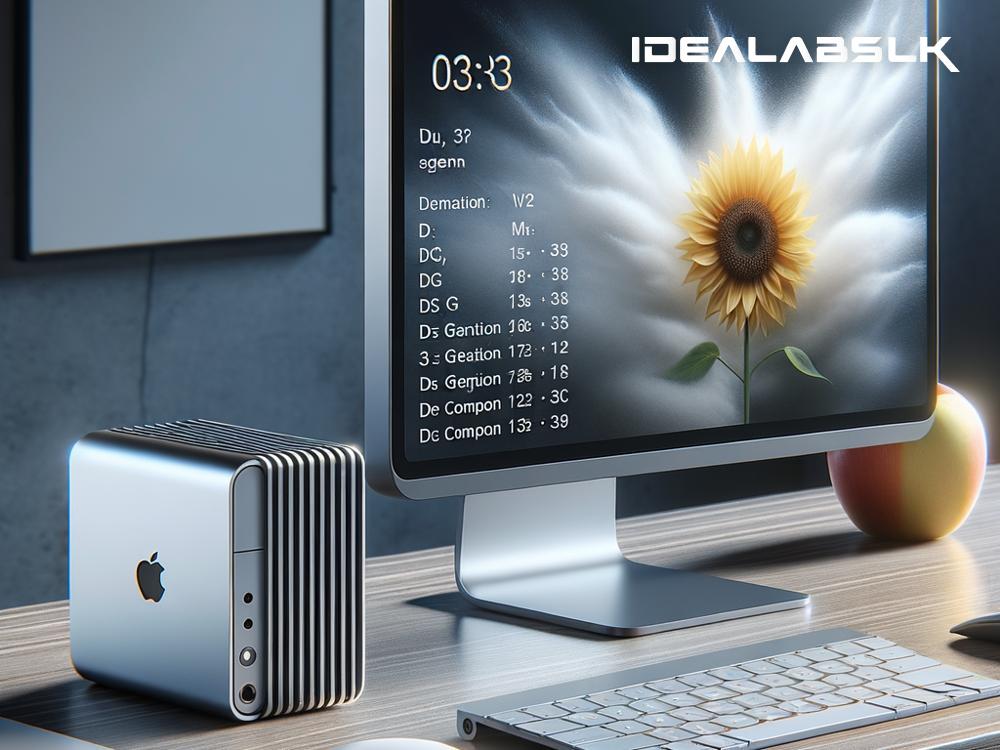Apple Mac Mini M3 vs. Intel NUC 12 Pro: A Detailed Comparison in the Mini PC Market
In the realm of compact computing, two names that often pop up are the Apple Mac Mini M3 and the Intel NUC 12 Pro. Both have made waves in the mini PC market for their robust performance packed into small form factors. But how do they stack up against each other? Let’s delve into a detailed comparison between these two power-packed machines to help you decide which might be the right pick for your computing needs.
Design and Build
Starting with design, Apple has always had an edge with its sleek, minimalist aesthetic, and the Mac Mini M3 is no exception. Its compact, unibody aluminum design not only looks great but also feels sturdy. Measuring just 7.7 inches square and 1.4 inches high, it’s designed to fit beautifully into any workspace without taking much space.
The Intel NUC 12 Pro, on the other hand, maintains its industrial look with a small, boxy form but with more visible ports and vents. It’s slightly smaller and more versatile in terms of placement, thanks to its VESA mount compatibility, which allows for attaching the unit directly to the back of a monitor.
Performance
Performance-wise, both mini PCs cater to different market segments. The Apple Mac Mini M3 is powered by Apple’s own silicon, the M3 chip (hypothetical as of my last update in early 2023), which is expected to deliver significant improvements in performance and energy efficiency over its predecessors. It’s optimized for macOS, ensuring smooth operation whether you're multitasking, editing videos, or running demanding applications.
The Intel NUC 12 Pro, equipped with the latest Intel processors, is no slouch either. It's customizable, allowing you to choose from different CPU options depending on your needs, from efficient i3 processors up to powerful i7 models. This makes the NUC 12 Pro a versatile choice for a wide range of tasks, including content creation, productivity applications, and even light gaming.
Connectivity
Connectivity is key for any desktop, and both these mini PCs offer a plethora of ports. The Mac Mini M3 boasts an impressive array of connections, including Thunderbolt/USB 4 ports, HDMI, USB-A, and Gigabit Ethernet, catering well to most peripherals and external displays.
Intel's NUC 12 Pro steps it up slightly in this domain, offering a similar range but with added flexibility owing to its customizable nature. It also features Thunderbolt 4, which is a plus for high-speed data transfer and connecting multiple 4K displays.
Upgradeability
Upgradeability is another critical factor, especially for users looking to future-proof their investment. Here, the Intel NUC 12 Pro shines with its user-accessible internals. You can upgrade RAM and storage, making it a more flexible choice for those who anticipate growing their digital library or requiring more memory in the future.
The Mac Mini M3, in keeping with Apple’s design philosophy, is not user-upgradeable. Purchasers must choose their desired configuration at the point of purchase, which could be a downside for users who prefer the option to upgrade components over time.
Software and Ecosystem
When it comes to software, the choice between these two might boil down to the operating system preference. The Mac Mini M3 runs macOS, renowned for its user-friendly interface, reliability, and seamless integration with other Apple products like the iPhone and iPad. This ecosystem benefit is a significant draw for many users, especially those already invested in Apple's world.
The Intel NUC 12 Pro, capable of running Windows, Linux, or even being a part of a custom computing solution, offers more versatility. Windows, being the most popular desktop OS, comes with its vast library of applications, making the NUC 12 Pro a reliable choice for a wider range of professional and personal computing tasks.
Price
Pricing can be a decisive factor for many, and in this aspect, the Intel NUC 12 Pro generally offers more flexibility. Being able to choose different configurations allows for a broader price range, making it accessible to a wider audience. The Mac Mini M3, while competitively priced for an Apple product, may come at a premium, especially at higher configurations.
Conclusion
Choosing between the Apple Mac Mini M3 and the Intel NUC 12 Pro depends on various factors, including design preferences, performance needs, connectivity requirements, upgradeability concerns, software ecosystem, and budget. The Mac Mini M3 excels in seamless integration within the Apple ecosystem, design, and energy-efficient performance, whereas the Intel NUC 12 Pro offers more flexibility in terms of upgradeability, a broader operating system compatibility, and a customizable performance level. Ultimately, aligning your choice with your computing needs and preferences will lead you to the right mini PC for you.

